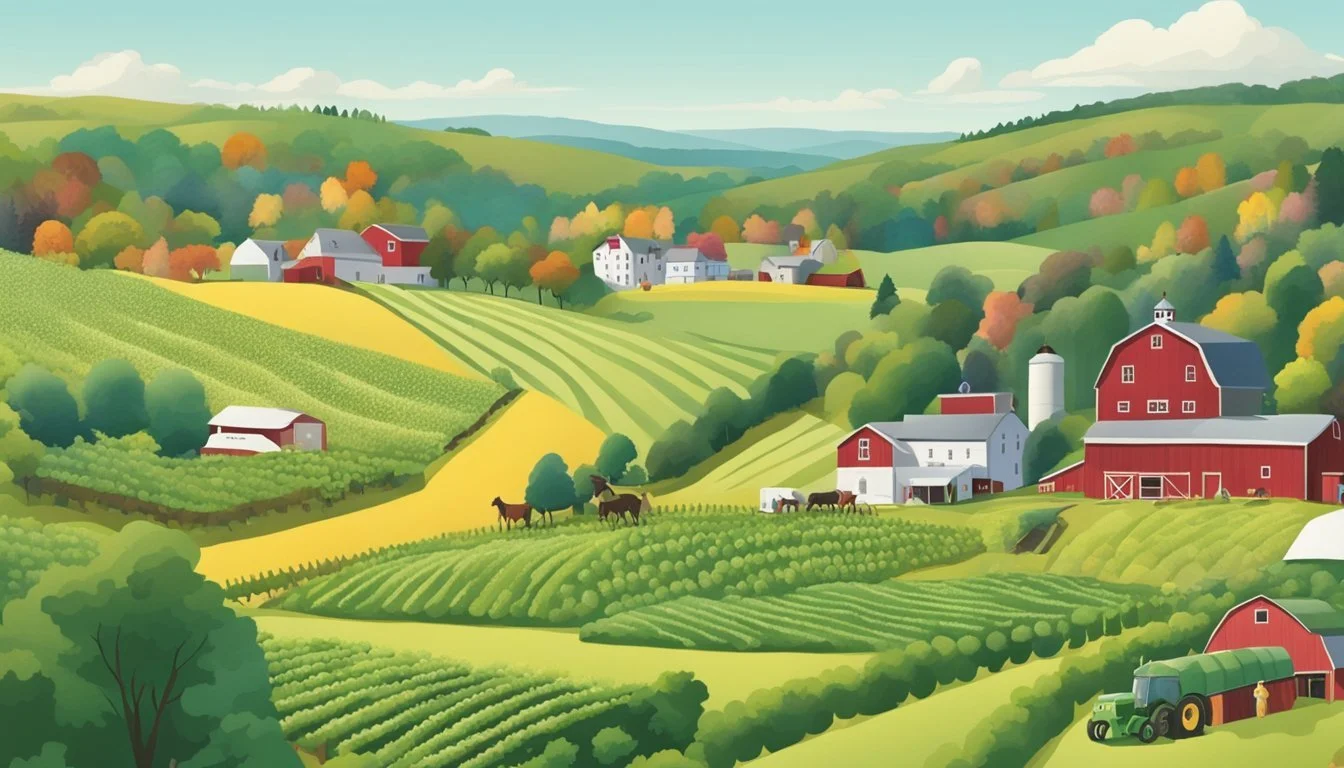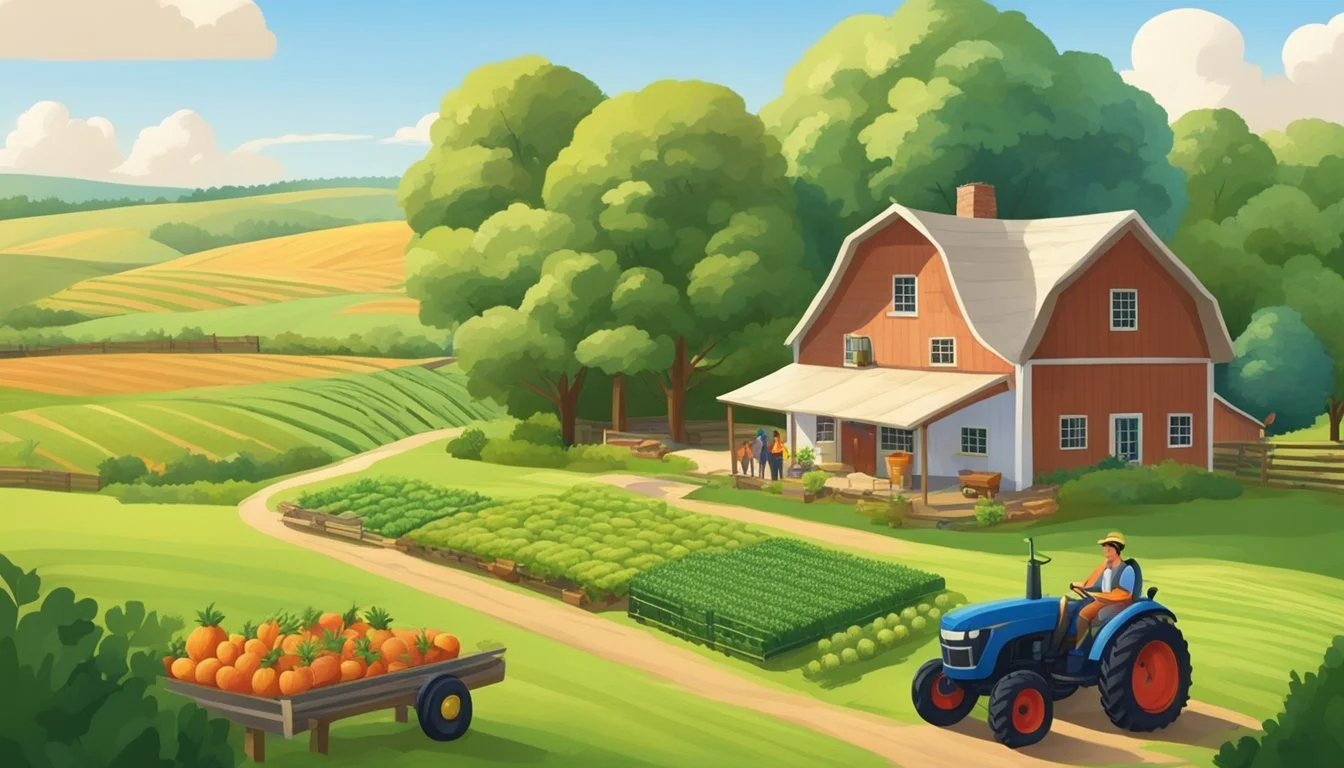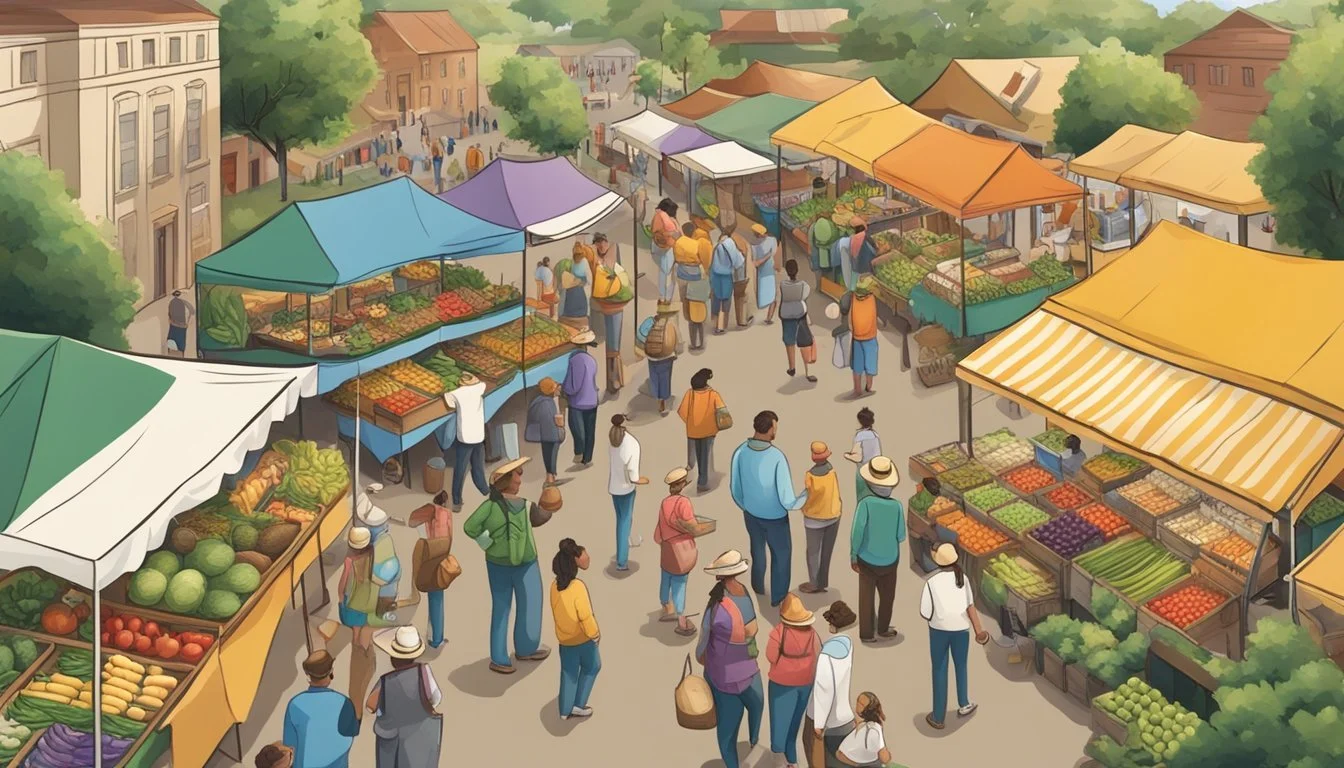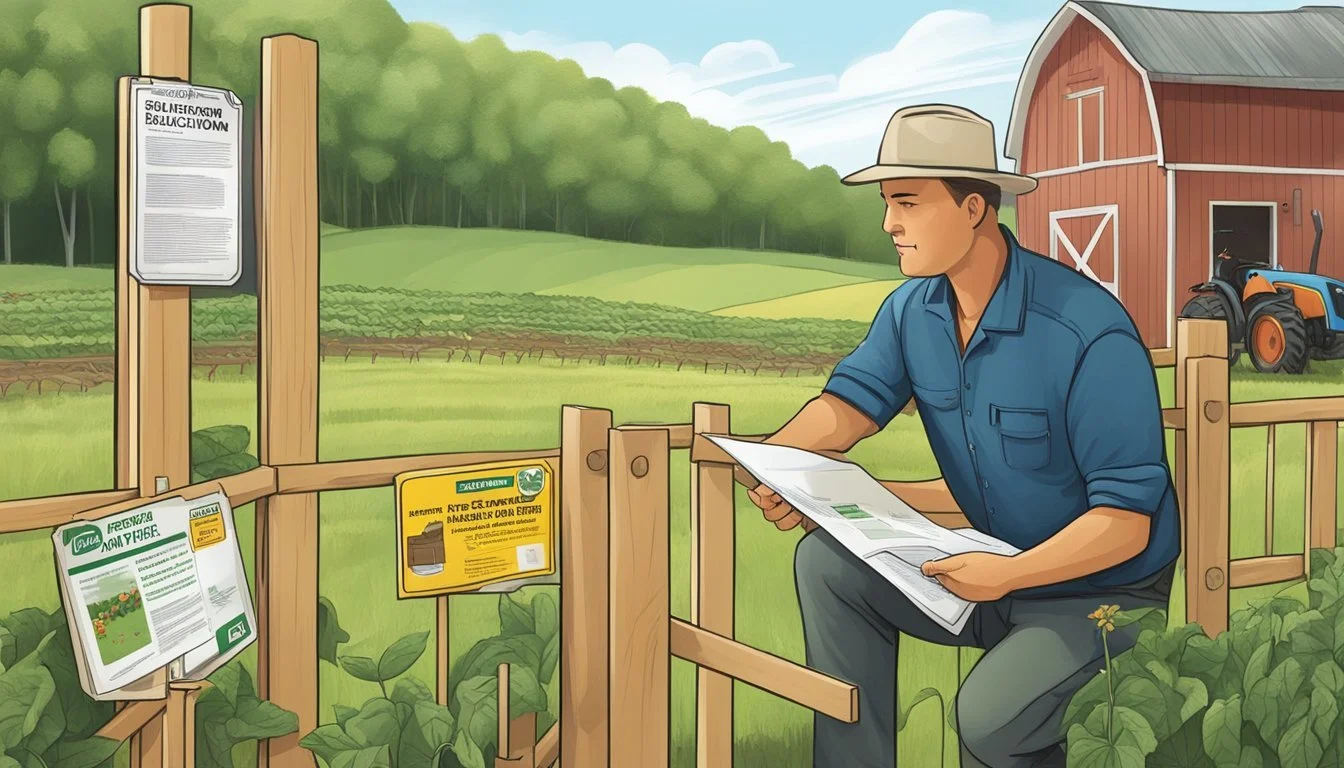Agritourism in New York
Unveiling the Empire State's Rural Charms
Agritourism has carved out a substantial niche within New York State's diverse tourism sector. This fusion of agriculture and tourism caters to visitors from near and far, looking for authentic farm experiences. Spanning from upstate regions to the pastoral outskirts of urban locales, New York's agritourism destinations provide an array of activities that educate and entertain. They range from farm stays and pick-your-own fruit ventures to educational workshops and agricultural festivals.
The growth in interest towards agritourism reflects a broader desire amongst consumers to understand the origins of their food and to engage with local food production processes. In New York, this has translated into an increase in farms offering tours, historical recreation, and interactive experiences like petting zoos and crop art displays. Additionally, these agritourism activities often include accommodations for outdoor sports enthusiasts and nature lovers, looking to immerse themselves in the rural landscapes of New York.
Contributing both to the state's economy and to the preservation of its farming heritage, agritourism in New York presents a market diversification opportunity for farmers. By opening their doors to the public, New York's agricultural operations are not only providing additional experiences for customers but also capturing more sales dollars. As a result, agritourism is becoming an essential part of many farms' business models, strengthening the link between producers and consumers within the local food system.
Understanding Agritourism in New York
In New York, agritourism connects consumers with the state’s rich agricultural roots, offering both educational and recreational experiences. Here we explore its origins, significance, and the legal framework that governs it.
Origins and Definition of Agritourism
Agritourism can be traced back to agricultural societies that sought supplemental income through inviting the public onto their farms. The New York State Department of Agriculture and Markets defines agritourism as activities conducted on-farm that entertain, educate the public, and promote the sale and use of farm products. This definition echoes the essence of agritourism which revolves around enhancing the public's understanding of farming.
Significance of Agritourism to New York State
Economic Contribution: Agritourism significantly contributes to New York State's economy, bridging agricultural production with tourism. This synergy presents a robust market where local farmers expand their revenue streams by offering farm-centric attractions and products, evidenced by the popularity of destinations like the Cayuga and Seneca Lake Wine Trails.
Public Engagement: Agritourism fosters a connection between the farming community and the general public, heightening the appreciation for farm life and locally sourced products. It also supports New York’s agrarian heritage by promoting agricultural education.
Agricultural Districts and Legal Framework
Agricultural Districts: Farms in New York are often part of designated agricultural districts, protecting them from overbearing local regulations that could impede farming activities. However, this protection is nuanced when applied to agritourism ventures, as they may not always align with traditional agricultural use classifications.
Legal Framework: When integrating agritourism, farmers must navigate complex zoning laws which can vary significantly between districts. They should ensure adherence to legal structures governing non-agricultural use of farmland to avoid potential lawsuits. The NYS Department of Agriculture and Markets provides guidance and support in understanding these regulations to facilitate the successful implementation of agritourism businesses.
Key Components of New York Agritourism
In New York, agritourism integrates the agricultural landscape with tourism by offering visitors direct experiences with farming operations and product sales.
Farms and Farmers
New York's agriculture is diverse, ranging from dairy farms to wineries. Farms often serve as the venues for agritourism, where visitors can engage in activities that educate and entertain. Farmers play a crucial role, acting as hosts and educators, and they directly engage with the public to share their knowledge of farming practices and land stewardship.
Diverse Farm Types:
Dairy farms
Wineries
U-pick operations
Maple syrup production
Farm Products and Sale
Agritourism in New York is not only about experiences but also about the products. Visitors often have the opportunity to purchase fresh, farm-produced goods directly from their source, which can include a wide array of products like dairy, meat, fruits, and vegetables. Harvesting seasons often dictate the types of activities and products available.
Products Available for Direct Sale:
Fresh Produce (e.g., fruits, vegetables)
Dairy Products (e.g., milk, cheese)
Meats (e.g., beef, poultry)
Specialty Items (e.g., maple syrup, honey)
Direct sales are supported by the NYS Department of Agriculture and Markets, which underscores the importance of farm product marketing as a component of agritourism.
Experiential Aspects of Agritourism
Agritourism in New York offers visitors a diverse range of hands-on experiences, from overnight stays on a working farm to participating in the harvest of fresh produce. Visitors can deepen their understanding of farm life through various educational and immersive activities.
Farm Stay and Accommodations
Farm stays offer guests a unique opportunity to immerse themselves in rural life. Accommodations can range from rustic bed and breakfasts to more lavish country lodgings. Visitors often participate in farm chores, offering a glimpse into the day-to-day operations of a working farm. This can include feeding animals, milking cows, or collecting eggs, providing an authentic farm experience.
Pick-Your-Own Operations
Pick-your-own (u-pick) operations are a cornerstone of New York's agritourism, inviting guests to harvest their own fruits and vegetables. Orchards and farms commonly offer this experience, with apples, pumpkins, and berries being popular options. Not only does this activity allow for fresh produce to be taken home, but it also connects visitors to the source of their food in a tangible way.
Educational Workshops and Tours
Farms frequently host educational workshops and guided tours to share knowledge about agriculture and sustainability. These can range from cheese-making classes to workshops on organic farming techniques. Guided tours can take visitors through various aspects of the farm, explaining crop cycles, animal husbandry, and eco-friendly farming practices, thereby enhancing the public's understanding of farming and farm life.
Promotion and Marketing of Agritourism
In New York, agritourism has become a pivotal part of farm income, leveraging unique events, strategic marketing practices, and customer feedback systems to attract visitors.
Events and Festivals
Events and festivals serve as significant drivers for farm visitation. They often include educational tours, historical reenactments, and crop art displays. Special events like harvest festivals and farm schools provide interactive experiences that are marketed to induce seasonal patronage. Notably, the integration of pageants and festivals into agritourism businesses has proven to increase visibility and stimulate local economies.
Marketing Strategies and Best Practices
Agritourism entities adopt a range of marketing strategies to appeal to a broad audience. Best practices include:
Online presence: A strong website and active social media accounts help farms connect with potential visitors.
Collaborations: Partnering with local businesses and tourism boards can extend marketing reach.
Targeted advertising: Identifying and reaching out to key demographics is essential for tailored marketing efforts.
Branding: Clear, consistent branding across all platforms helps in establishing a recognizable image.
Effective marketing not only highlights the products but also the experiences customers can anticipate.
Review and Feedback Systems
To maintain and improve the quality of agritourism experiences, businesses employ review and feedback systems. These platforms provide valuable insights from visitors that can inform future business improvements. Positive reviews serve as a powerful marketing tool, often compelling new visitors to explore the farm based on trustworthy peer recommendations. It is important for businesses to actively engage with these systems, addressing any concerns and showcasing their commitment to visitor satisfaction.
Risk Management and Regulations
Agritourism in New York must navigate a complex landscape of risk management and regulatory adherence to ensure safety and reduce exposure to liability.
Insurance and Liability Issues
Owners and operators of agritourism ventures in New York State are required to manage risks associated with welcoming the public onto their premises. Insurance is a critical component, offering a safety net against potential claims associated with injuries or accidents. Policies must be carefully selected to cover activities ranging from farm tours to equine experiences (excluding equine therapy). Under the "Safety in Agricultural Tourism Act" within the New York General Obligations Law (GOL), owners adhering to specific safety requirements may not be held accountable for visitor injuries or deaths, provided they comply with stipulated conditions.
Insurance Coverage Must-Haves:
General Liability
Property Insurance
Workers' Compensation (for employees)
Specific Activity Coverage (e.g., horseback riding, u-pick)
Key Liability Provisions (GOL Section 18-303(1)(a) - (e)):
Adequate signage warning of inherent risks
Maintenance of paths and facilities
Proper training for staff involved in agritourism activities
Documented notification to visitors of potential risks
Regulatory Compliance and Preparations
For robust risk management, agritourism entities must ensure compliance with existing regulations. The New York State Agriculture and Markets provides tailored guidance for the development of agritourism activities, outlining necessary steps and precautions to mitigate risks. This compliance is not just a legal necessity but also vital for maintaining a safe environment for visitors and employees. Preparatory measures include training staff, crafting emergency protocols, and implementing best practices for safety and health.
Regulatory Compliance Checklist:
Thorough understanding of the NYS Safety in Agricultural Tourism Act
Regular safety audits and risk assessments
Visitor acknowledgments of inherent risks
Compliance with health and sanitary standards
Preparation Essentials:
Staff training on emergency response and safety procedures
Clear communication of rules and safety measures to guests
Establishment of clear protocols for the prevention and reporting of accidents
Agritourism businesses in New York must consistently apply a proactive approach to risk management and regulatory compliance to enhance their operations' sustainability and safety.
Cultural and Environmental Impact
Agritourism in New York impacts both the environment and local cultures in profound ways. Its growth encourages environmental stewardship while weaving agriculture more deeply into the cultural fabric of communities.
Environmental Stewardship
Agritourism acts as a catalyst for environmental stewardship by demonstrating the value of sustainable agricultural practices to a broader audience. Farmers set the stage for best practices in conservation by:
Educating visitors on environmentally friendly farming techniques.
Implementing green technologies that reduce the ecological footprint of farming operations.
Preserving rural landscapes by maintaining productive agricultural districts amidst urbanization pressures.
Noise pollution remains a concern; however, agricultural districts often have regulations ensuring that the noise levels associated with agritourism do not disrupt local wildlife or the surrounding environment.
Community and Cultural Integration
Agritourism fosters a strong bond between farmers and the community by:
Enabling tourists to participate in cultural traditions, such as harvest festivals and farm-to-table events.
Supporting local economies and small businesses through increased visitor spending.
These initiatives not only bring economic benefits but also promote a greater understanding and appreciation for the agricultural way of life, helping to anchor it firmly within the cultural identity of New York's diverse regions.
Regional Spotlights on New York Agritourism
The diverse landscapes of New York state offer an array of unique agritourism experiences, each with its own character and agricultural specializations.
Hudson Valley Attractions
The Hudson Valley is renowned for its scenic beauty and rich soil, which contribute to thriving agriculture. Kinderhook Farm is a notable destination, offering visitors an insight into sustainable livestock farming. Here, they can engage in farm tours and even stay overnight at the farm's bed and breakfast. For those with a taste for crisp, fresh fruit, the region's apple orchards, such as Stone Ridge Orchard, provide a delightful "pick-your-own" experience during harvest season.
Finger Lakes Region Delights
The Finger Lakes Region, famous for its deep glacial lakes and wine production, also boasts outstanding agritourism ventures. Wine connoisseurs may visit vineyards and savor the local vintages in a scenic backdrop. In addition to wineries, farms like Stony Creek Farmstead offer interactive experiences, including farm-to-table dinners, cheese-making workshops, and a farmers market where visitors can purchase organic produce directly from the growers.
Catskills Mountain Range Experiences
Agritourism thrives in the Catskills with its diverse topography and historic farms. Blind Buck Valley Farmstead in Salem encapsulates the allurement of agri-vacations with its comfortable accommodations and hands-on activities like gathering eggs and feeding animals. The region also provides the perfect setting for outdoor enthusiasts to explore the mountain ranges while learning about the local agriculture and sustainable practices.
Planning Your Agritourism Experience
When visiting New York for an agritourism experience, travelers should consider the time of year and available activities for an enriched trip.
Seasonal Planning and Offerings
New York State offers a variety of seasonal experiences in its many agritourism destinations. The New York State Department of Agriculture and Markets highlights the importance of aligning your visit with seasonal offerings for an optimal experience.
Spring/Summer: This time is perfect for berry picking, exploring flower fields, and enjoying the freshness of on-farm markets.
Fall: Visitors can navigate corn mazes, participate in harvest festivals, and revel in the vibrant fall foliage.
Winter: Fewer activities are available, but some farms offer holiday-themed events or indoor farm-to-table dinners.
Upstate New York, especially, boasts a broad spectrum of nature-driven, seasonal activities that enhance the farm experience.
On-Farm Activities and Navigation
Engaging in on-farm activities provides visitors with a hands-on approach to understanding local agriculture. Here's a brief guide:
Farmstays:
Experience: Immersion in farm life, closer interaction with farmers
Location: Widespread across New York, offering unique regional insights
Farmers' Markets:
Offer: Locally produced goods, direct from producer to consumer
Explore: The array of seasonal produce, local artisanal products, and gourmet specialties
Navigation around farms should be approached with a sense of preparedness:
Maps: Many farms provide maps for self-guided tours.
Signage: Look out for directional signs for different activities and facilities on the premises.
Each farm may possess unique attractions and rules, so it's wise to research or contact the venue in advance for a seamless visit.








